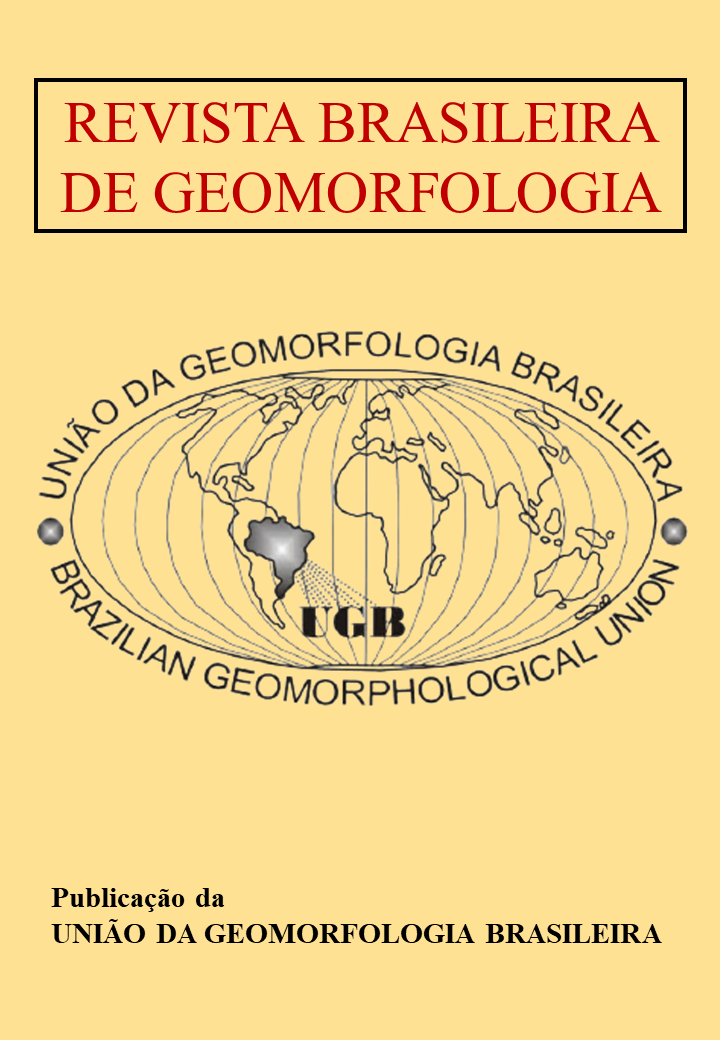Reciprocal interactions between relief, water and gullies: a case study in the Bação Complex region – Minas Gerais
DOI:
https://doi.org/10.20502/rbgeomorfologia.v24i00.2364Keywords:
erosion, hydrological regime, crystalline basement, mass movementsAbstract
The importance of water in the genesis and evolution of gullies is well-known, but there are still few studies on its interaction with relief and gullying. This work aims to advance in this subject in a region of crystalline basement (Bação Complex) in the Quadrilátero Ferrífero, Minas Gerais state, Southwest region of Brazil. The work involved integrated geological, geomorphological, and geotechnical data analysis, water monitoring, and numerical flow simulations. The results indicate that the evolution of these gullies is a consequence of the thick profile of erodible saprolites and the action of groundwater controlled by geomorphological factors. With the lowering of the water table around the gullies, recharge and exfiltration of water in their slopes are delayed. However, inside the gullies, runoff predominates, resulting in an increase in flows and flooding in the rainy season and a reduction in baseflow in the dry season. The delayed exfiltration of water on the slopes induces mass movements and piping, even in the dry period, mobilizing significant sediment loads that will be transported in the first rains of the wet period. Therefore, Bação Complex’s gullies are conditioned and modify the water, causing various economic and socio-environmental damages.
Downloads
Downloads
Published
How to Cite
Issue
Section
License

This work is licensed under a Creative Commons Attribution-NonCommercial 4.0 International License.
Author (s) retain copyright and grant the journal right of first publication with the work simultaneously licensed under the Creative Commons Attribution License that allows sharing the work with recognition of its initial publication in this journal.








